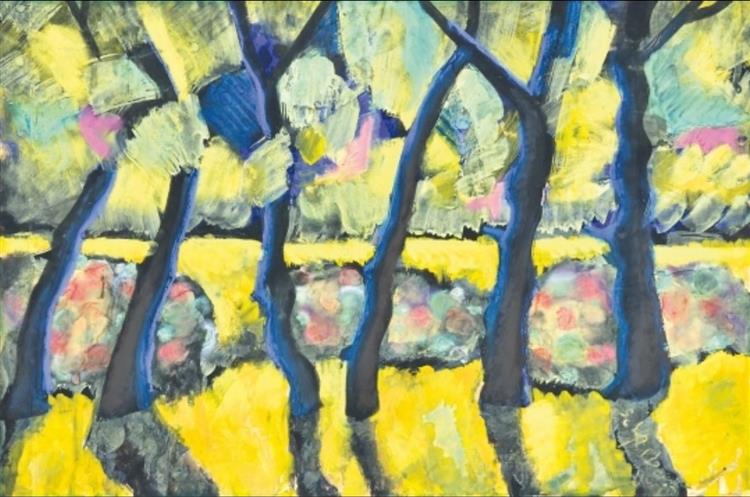Description
The work "Fák Kékben" by Hugó Scheiber is a remarkable expression of the use of color and the shape in the painting of the twentieth century, a period in which art became a means of exploration and reinterpretation of reality. Scheiber, who was born in 1873 and had a prolific career until his death in 1950, stood out in the movement of Fauvism, characterized by vibrant colors and a subjective approach to nature. In this particular work, which is presented with a visual language that contemporarily resonates with the viewer, the author manages to capture an atmosphere of tranquility and at the same time of a slight astonishment before the majesty of nature.
The composition of "Fák Kékben" is dominated by the representation of trees that emerge in a hue of intense blue, a resource that not only challenges the conventions of the traditional landscape, but also invites contemplation. This deep blue suggests a sense of depth and space, at the same time that it establishes an emotional connection with the viewer. The trees, stylized and with an almost abstract representation, rise on the bottom, which can be read as an echo of the sky or wind. The color palette used, which covers from the blue to the darker green and tones, creates a contrast that is both harmonious and vibrant, revealing Scheiber's virtuosity in color management.
The work lacks human figures, which is a distinctive feature that allows the spectator to immerse himself completely in nature, witnessing his beauty without distractions. This isolation of the human being in the work is aligned with certain currents of modern art that emphasizes the connection between man and his natural environment, often highlighting the loneliness of contemporary man against the vastness of nature. The trees, in its greatness and corporeality, seem to represent a way of life that, despite its stagy, is in constant communication with the surrounding environment.
It is relevant to mention that Hugó Scheiber was part of Budapest's vibrant artistic life and had influences when he joined the circle of Fauvism, where his contemporaries explored the color of bold ways. His work "Fák Kékben" is inscribed in this context, reflecting the author's interest in a representation that challenges the perceptible, by using colors that in reality do not communicate what in painting can be felt.
In a broader context, Scheiber's work can be compared to other exponents of Fauvism, such as Henri Matisse and André Derain, who also used the color not only to describe reality, but to express emotions and perceptions. The way in which Scheiber uses color as a system contained in his work goes beyond the mere representation of a landscape, allowing the viewer a sensory experience that evokes almost poetic sensations to nature.
"Fák Kékben" is not simply a picturesque landscape; It is an invitation to a new way of seeing the world, where color and shape become the environment to explore deep and universal human experiences. Thus, Scheiber's work remains not only as a testimony of a moment in art history, but as a reminder of the continuous evolution of artistic perception. In short, each contemplation reveals a more meaning layer, turning this work into a true object of reflection on nature and our place within it.
KUADROS ©, a famous paint on your wall.
Hand-made oil painting reproductions, with the quality of professional artists and the distinctive seal of KUADROS ©.
Art reproduction service with satisfaction guarantee. If you are not completely satisfied with the replica of your painting, we refund your money 100%.

